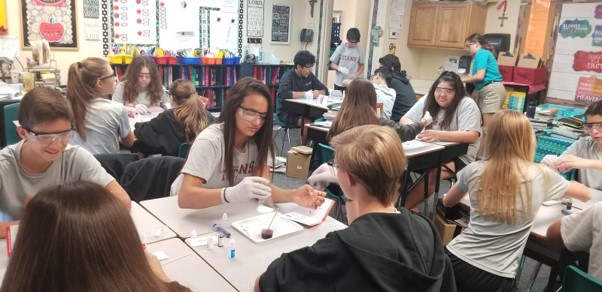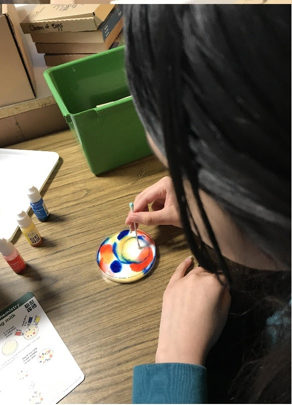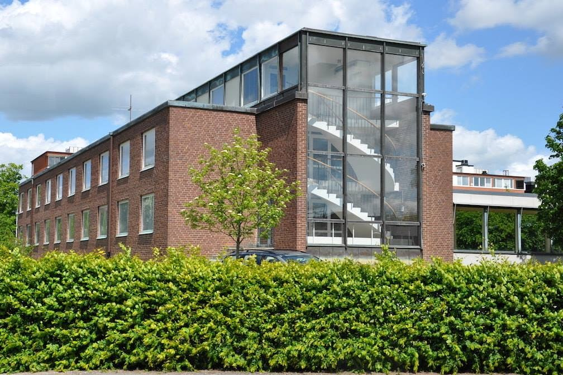Everest in syringe – an experiment you can make at home
The weekend is coming. Here is a simple idea of how to make an amazing experiment at home, along with your kids and using makeshift materials. Do you remember the question of whether it takes more or less time to cook an egg on top of Mount Everest? Let’s check it out right now! —
The Answer
Let me start right with the answer: it will take more time to cook an egg on the top of Mount Everest as the boiling point is lower.
But Why?
As soon as we give such an answer, the following question immediately follows:
- Why is it lower?
- Because atmospheric pressure there is lower too.
- But why is the boiling point lower when atmospheric pressure is lower?
The question “why …” is a very powerful and correct question. This is the key for a child and an adult to understand the world. I know a very few people who can stand over five consecutive clarifying questions “why …” in a row. But we will talk about it later.
Cold Boiling Water at Home
And now let’s get back to the experiment that you can do with your children this weekend. At home, we will now create conditions like those atop Everest and see with our own eyes how not even the hottest water boils with little pressure. All you need is a conventional syringe – the bigger, the better. Next:
- Fill the syringe with some warm water
- Let all the air out
- Plug with a finger
- Pull the piston aside to lower the pressure
- Yay! The water has boiled!
In fact, this way we can get a very low pressure, hundreds of times lower than the atmospheric pressure. We can boil even noticeably-colder water than on Everest. At the top of Mount Everest, the pressure is about one third of the normal atmospheric pressure.
Why does water evaporate?
So, why exactly does warm water boil when the pressure decreases? To answer this question, it is reasonable to ask why water boils in general in the first place?
Water evaporates at all temperatures. Among the trillions of water molecules present, there are always some that are faster. The speed of these molecules is enough to overcome the attraction of other molecules, and fly away in the form of steam just as they approach the surface. We should note that the fastest molecules fly in the form of steam; so, the average speed of the rest of the molecules decreases. Generally, we say that water gets colder when it is evaporating. For example, if all the best pupils of a class were shifted to another school suddenly, the average class level is bound to decrease a little.
Higher the water temperature, faster the molecules fly on average. Greater the percentage of molecules that has sufficient speed to break and fly away while approaching the surface, faster the water evaporates.
Why does water boil?
But, why does water begin to boil at a certain temperature? What is so special in this particular temperature?
To understand this in a better way, it is necessary to realize that water evaporation from the surface is not the only contributing factor. There is another parallel process where water vapor condenses. Larger the amount of water vapor above the surface, more the probability of vapor molecules going into the water and “sticking” there.
As water evaporates, water vapor keeps increasing to a point where equilibrium is reached between the rate of evaporation of water and the rate of condensation of vapor. In other words, the number of water molecules that fly away from the surface in a second is equal to the number of molecules that fly back. Generally, we say that vapor becomes saturated. Warmer the temperature of the water is, larger the number of molecules leaving the surface. Consequently, similar numbers of molecules return from the gas form to meet the equilibrium. Number of molecules of water in gas is directly proportional to the saturation of the vapor pressure.
There is a special vapor pressure for each temperature of water, at which the vapor becomes saturated; as we have seen, pressure increases when the temperature increases. Precisely here is the moment of truth! What will happen if the vapor pressure surpasses that of the atmosphere? That could happen: if a small bubble were to form in the water somehow, evaporation could start inside that bubble. Since the pressure of the saturated vapor is greater than the atmospheric pressure, the bubble will grow, which, otherwise, will collapse by the atmospheric pressure. The larger size of the bubble would mean greater surface area, which will consequently mean faster water evaporation into the bubble. This bubble has risen, floated and then flown away.
This is what we call boiling of water. To get water to boil, it is necessary that the atmospheric pressure doesn’t collapse the formation of small bubbles. This goes to mean that the saturation vapor pressure for the current water temperature is greater than that of the atmosphere.
That would be all. That is exactly why water boiled in our syringe. We had removed the atmospheric pressure; so, nothing prevented the little bubbles from growing due to the evaporation of water inside them.
Experiments with your children at home
If you like making experiments with your children then you would be interested to check our new service - MEL Chemistry. New chemistry experiment every week delivered to your door by post. 52 weeks = 52 interesting topics = 52 boxes with amazing experiments. If you care about the educational progress of our children then this service is for you.
See also

CASE STUDY - 8th Grade students at St Timothy's Catholic School use MEL Chemistry to enhance their science lessons
Saint Timothy Catholic School in Mesa is committed to promoting academic excellence in each child it looks after. They encourage self-discipline, self-respect, and respect for others. They understand the importance of engaging students in a comprehensive and relevant curriculum. As a result, the middle school science teacher from St. Timothy Catholic School is using MEL Chemistry subscriptions to enhance and expand their range of learning activities.

CASE STUDY - MEL Chemistry allowing pupils to reach their full potential
The Empower Learning Center is the Alternative Learning Program (ALP) within the Hinckley-Finlayson School District. They offer non-traditional education options for students ages 16-21 in their daytime program, night school for traditional high school students who need to make up credits, and night school for adults 18 and older who would like to complete their diploma or equivalency.
The school was seeking engaging, hands-on chemistry kits to make their science classes more interactive, and to help their students understand key science concepts and achieve their full potential in chemistry.

CASE STUDY - MEL Chemistry at Lund International School, Sweden
Emma Taylor, a science teacher at Lund International School (Sweden), has chosen MEL Chemistry sets as the best option for her students’ science classes. In Lund International School, all programmes are taught in English, and having chemistry sets in English are a great asset to accompany science classes.
Here, Emma shares her experience of how MEL Chemistry sets improved her students’ comprehension and understanding of science concepts.